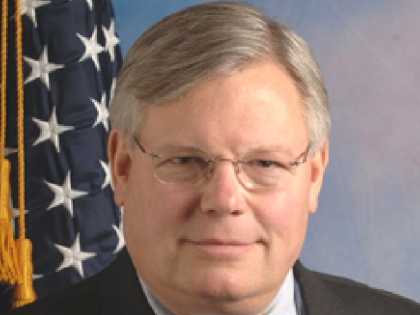
Testimony by New York State Senator Thomas K. Duane before the New York City Landmarks Preservation Commission Regarding the Granting of Landmark Designation To Westbeth
Thomas K. Duane
February 5, 2010
Testimony by New York State Senator Thomas K. Duane before the New York City Landmarks Preservation Commission Regarding the Granting of Landmark Designation To Westbeth
January 12, 2010
My name is Thomas K. Duane and I represent New York State’s 29th Senate District, which includes Westbeth, an affordable housing complex for artists and a center for the arts in the West Village. I would like to join Manhattan Community Board Two, Greenwich Village Society for Historic Preservation and others in urging the New York City Landmarks Preservation Commission (LPC) to approve landmark designation for Westbeth, which occupies the entire block bounded by Bethune Street on the north, Bank Street on the south, Washington Street on the east, and West Street on the west.
Westbeth, which currently consists of five separate buildings and a large landscaped park, with 384 residential units, a gallery, a theater, and commercial spaces, was the United States’ first federally-funded affordable housing for artists and the first large-scale conversion of an industrial complex into a residential development. The conversion, from 1967-70, was designed by Richard Meier, one of the world’s most prestigious architects, when the adaptive reuse of buildings was in its early stages and the idea of converting a complex of this size solely for the use of artists was ground-breaking. Forty years later, the complex retains the integrity of its conversion to a very high degree.
The buildings on this block, erected from 1861-1929, served as a research and manufacturing facility for Western Electric Company and its successor, Bell Laboratories, which conducted many noteworthy experiments there. This complex underwent a major alteration from 1931-34 when the New York Central Railroad built its elevated High Line freight tracks. The rail line cut right through the third story of the building at 51-55 Bethune Street and established an efficient means of shipping goods to and from the complex. After Bell Laboratories moved to New Jersey in the mid-1960s, Roger L. Stevens, the first chairman of the National Endowment for the Arts, and Jacob Merrill Kaplan, the founder of the J. M. Kaplan Fund, conceived of converting the then-vacant property into the live-work community for low- and moderate-income visual and performing artists that it is today.
Last month Westbeth was placed on the State and National Register of Historic Places. With its unique and significant history as the birthplace for some of the country’s most remarkable inventions, including the transistor, television, and radar, and then as the country’s first federally subsidized artists’ housing and among the largest living and working facility for artists in the world, Westbeth makes an important contribution to the history and enduring character of our neighborhood. It has had an extraordinary impact both within and beyond Greenwich Village and is worthy of designation as a New York City Landmark.
I very much appreciate the Commission’s continued attention to the preservation of the Far West Village, as demonstrated by its consideration of this significant property today. I am eager to come before you again to support three other Far West Village sites – Charles Lane and 370 and 372 West 11th Street – for which the community also supports landmark designation.
Thank you for allowing me to testify today and for your consideration of my recommendation.
Share this Article or Press Release
Newsroom
Go to NewsroomCommemorating World AIDS Day
December 1, 2011
Senator Duane Speaks Out Against Hydrofracking
November 30, 2011
Announcing a Tenant Bid for Stuyvesant Town-Peter Cooper Village
November 30, 2011